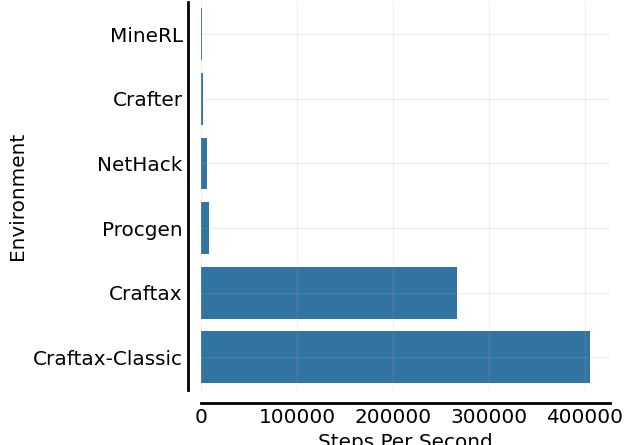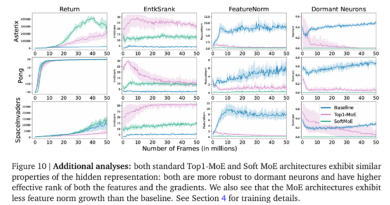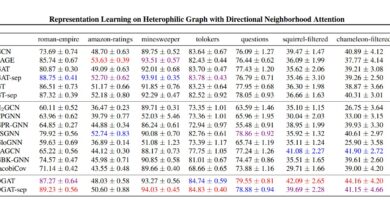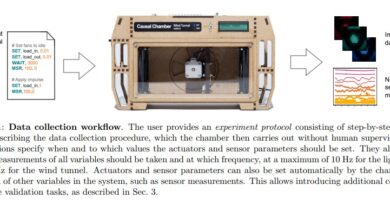Researchers at the University of Oxford Introduce Craftax: A Machine Learning Benchmark for Open-Ended Reinforcement Learning
In the field of machine learning, benchmarks play a crucial role in the development and analysis of reinforcement learning (RL) algorithms. They provide standardized environments and tasks that enable researchers to compare the performance of different algorithms. This helps drive advancements and improvements in RL techniques. Recently, researchers at the University of Oxford introduced Craftax, a machine learning benchmark specifically designed for open-ended reinforcement learning.
The Importance of Benchmarks in Reinforcement Learning
Before diving into the details of Craftax, let’s first understand why benchmarks are crucial in reinforcement learning. RL algorithms aim to train an agent to make optimal decisions in an environment by maximizing a reward signal. However, evaluating the performance of these algorithms can be challenging without standardized benchmarks.
Benchmarks serve as standardized test environments that allow researchers to compare the performance of different RL algorithms. They provide a common ground for evaluating and analyzing the strengths and weaknesses of various techniques. By using benchmarks, researchers can objectively measure the progress made in RL and identify areas that require further improvement.
The Need for Open-Ended Reinforcement Learning Benchmarks
While existing RL benchmarks have been instrumental in advancing the field, they primarily focus on specific aspects of RL, such as value-based deep RL algorithms, continuous control, or multi-agent RL. These benchmarks often lack the open-ended dynamics that are crucial for developing more generic RL agents capable of handling real-world scenarios.
To address this limitation, researchers have been exploring benchmarks that exhibit open-ended dynamics, including procedural world generation, skill acquisition and reuse, long-term dependencies, and constant learning. However, many of these benchmarks suffer from lengthy runtimes, making them impractical for use with current methods that do not employ large-scale computer resources.
Introducing Craftax: A Fast and Complicated Benchmark
Researchers at the University of Oxford and University College London have introduced Craftax to bridge the gap between open-ended dynamics and practical use. Craftax is a machine learning benchmark specifically designed for open-ended reinforcement learning that addresses the limitations of existing benchmarks.
Craftax is built on JAX, a high-performance machine learning library, which allows it to run significantly faster compared to similar benchmarks. It offers intricate, open-ended dynamics while maintaining a fast runtime. One of the concrete examples of Craftax is Craftax-Classic, a JAX reimplementation of Crafter, which outperforms the original Python version by 250.
The researchers conducted experiments using a basic PPO agent and found that Craftax-Classic could be solved up to 90% of the maximum return in just 51 minutes, with easy access to significantly more timesteps. This highlights the potential of Craftax as a challenging benchmark that allows experimentation even with constrained computational resources.
Advantages of Craftax Over Existing Benchmarks
Craftax offers several advantages over existing benchmarks for open-ended reinforcement learning. Firstly, it leverages the speed and efficiency of JAX to provide a significantly faster runtime compared to other benchmarks. This enables researchers to iterate and experiment more quickly, accelerating the development of RL algorithms.
Secondly, Craftax introduces new game mechanics that add complexity and challenge to the benchmark. By incorporating mechanics from the popular Roguelike genre and borrowing elements from NetHack, Craftax offers a rich and diverse environment for RL agents to learn and adapt.
Furthermore, Craftax provides both pixel-based and symbolic observation variants. While the pixel-based observations add an additional layer of representation learning to the problem, the symbolic observations are approximately ten times faster. This flexibility allows researchers to choose the most suitable variant based on their specific requirements and computational resources.
The Future of Craftax and Open-Ended Reinforcement Learning
The introduction of Craftax by the researchers at the University of Oxford marks an important step towards advancing open-ended reinforcement learning. By providing a fast and complicated benchmark, Craftax enables researchers to explore and develop RL algorithms capable of handling real-world challenges.
The researchers hope that Craftax will encourage experimentation with constrained computational resources while posing a substantial challenge for future RL research. The benchmark’s ability to deliver intricate dynamics at a significantly faster runtime opens up new possibilities for the development of more generic and adaptable RL agents.
As the field of RL continues to evolve, benchmarks like Craftax play a vital role in shaping the future of reinforcement learning. They provide a standardized platform for evaluating and comparing the performance of RL algorithms, fostering innovation and driving advancements in the field.
In conclusion, Craftax, introduced by the University of Oxford researchers, represents a significant contribution to the field of open-ended reinforcement learning. By offering a fast and complicated benchmark, Craftax enables researchers to explore new frontiers in RL and develop algorithms capable of tackling real-world challenges.
Check out the Paper and Project Page. All credit for this research goes to the researchers of this project. Also, don’t forget to follow us on LinkedIn. Do join our active AI community on Discord.
If you like our work, you will love our Newsletter 📰




